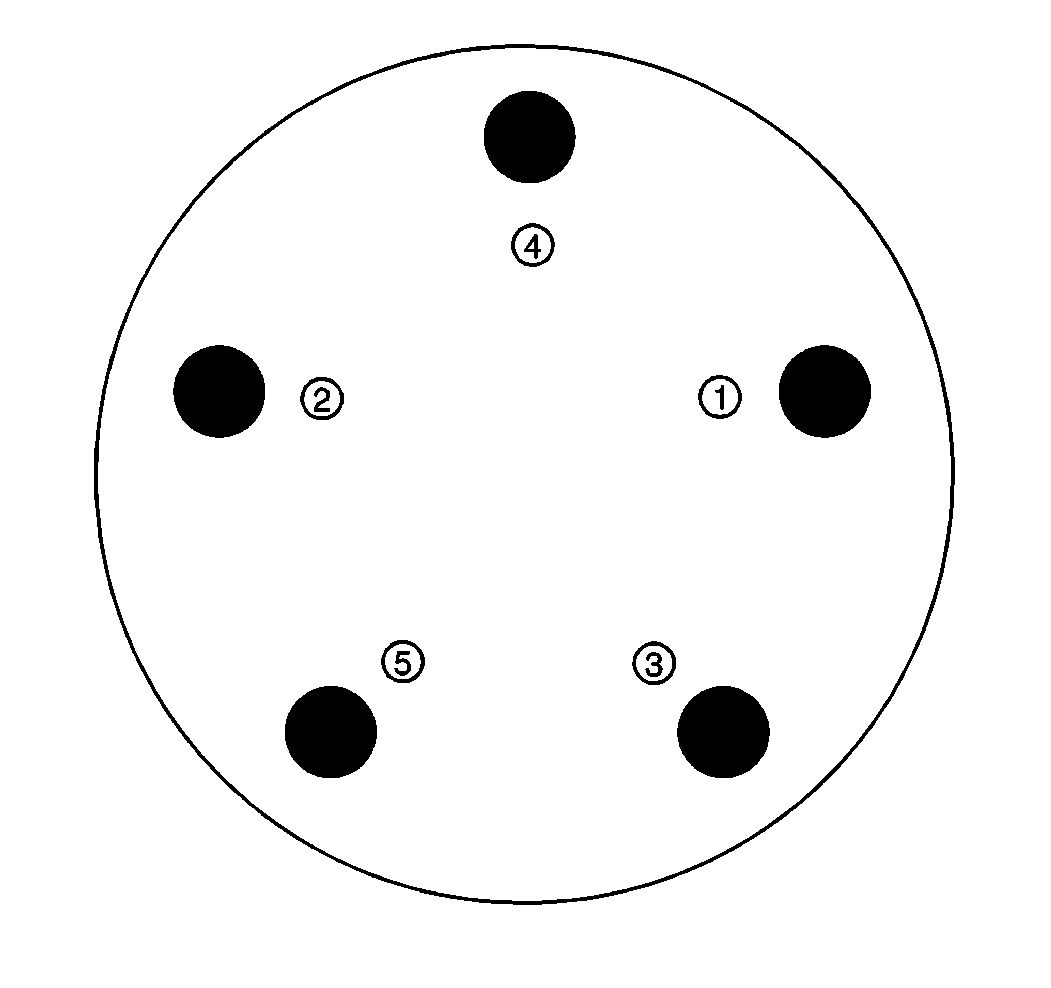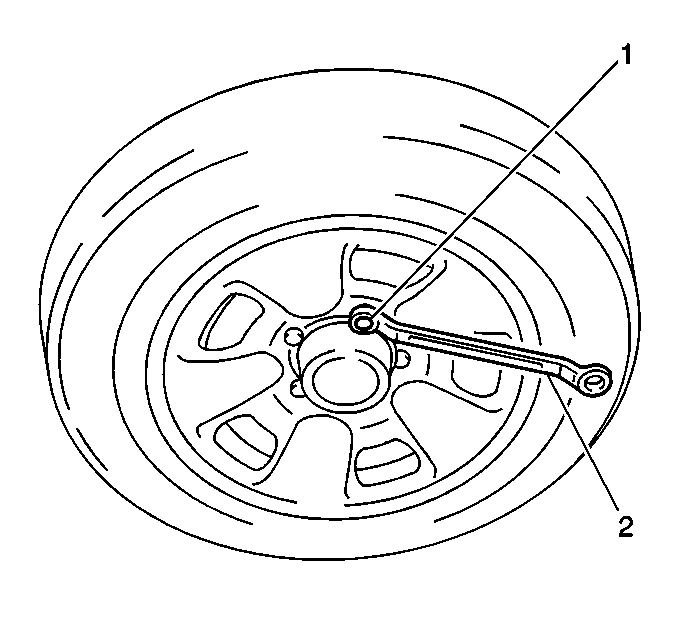Caution: Before installing the wheels, remove any buildup of corrosion on the
wheel mounting surface and brake drum or disc mounting surface by scraping
and wire brushing. Installing wheels with poor metal-to-metal contact at the
mounting surfaces can cause wheel nuts to loosen. This can cause a wheel to
come off when the vehicle is moving, causing loss of control and possibly
personal injury.
- Clean the following components in order to remove any
corrosion or foreign material:
| • | The wheel mounting surface |
| • | The brake rotor or the brake drum mounting surface |
- Install the tire and wheel assembly. Align the locating mark on
the wheel to the hub.
Notice: Refer to Fastener Notice in the Preface section.

Caution: Never use oil or grease on studs or nuts. Tighten the wheel nuts with
your fingers until they are snug. Then, tighten the nuts (in the sequence
shown) to the fastener tightening specification shown in Specifications in
this Section. Improperly tightened wheel nuts could eventually allow the wheel
to come off while the vehicle is moving, possibly causing loss of control,
personal injury, and property damage.
Notice: Improperly tightened wheel bolts or nuts can lead to brake pulsation and rotor damage. In order to
avoid expensive brake repairs, evenly tighten the wheel bolts or nuts to the proper torque specification.
- Install the wheel nuts (1-5).
Tighten
Tighten the wheel nuts in the sequence shown to 100 N·m
(73.8 lb ft).
- If the vehicle has wheel nut caps, install the wheel nut caps.
Tighten
Tighten the wheel nut caps to 3 N·m (27 lb in).
- Remove the safety stands and lower the vehicle.


